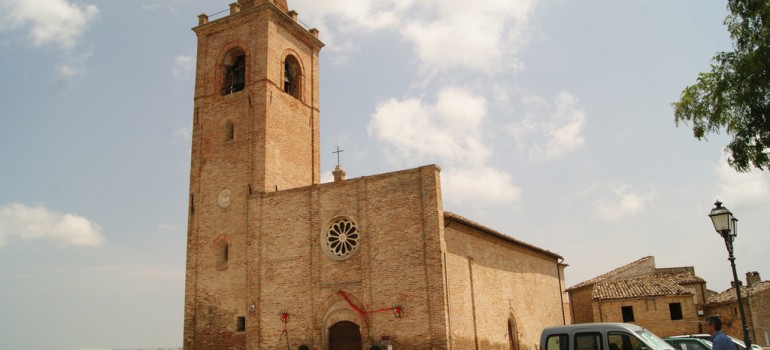
It stands on the highest part of the city, it dates back to centuries. XI and has a fourteenth-century structure in the Romanesque style. In the main facade is placed a magnificent “rosette” travertine with twelve columns arranged ray, with center the face of the “Redeemer” and a “portal” terracotta consists of three overlapping arches. The majestic “bell tower” of the fourteenth century, on the left side of the church, it houses a fresco of restoration of the fifteenth century, depicting the “Madonna and Child with St. Lucia.” On the right side of the church there are two “portals” vaulted arches of the century. XV, one of which is the current entrance to the crypt of Our. The church has two aisles, with trussed roof, and preserves “altars” wooden baroque style and a “wooden choir” of which there are only six stalls, a Gothic work of the century. XV attributed to Apollonius from Ripatransone. The main altar bears a “canvas art Marche” of the century. XVIII depicting Saints Peter and Paul with Castignano background. On the right wall fascinates the fresco of the “Last Judgment”, painted in the fifteenth century, with the description of the afterlife: the Angel who reads the book of life and the weighing of souls with the balance davan¬ti to St. Michael ; they also show that, at the right hand of Christ as Judge, the “blessed” by the Angels ser¬viti while, to your left, the “damned” are tortured by devils with pits Dante. In the Inter-Diocesan Museum of Sacred Art set up inside the sacristy, you can admire one of the most valuable works: the “Reliquary-monstrance of the Holy Cross” silver gilt, revered by Castignanesi, late Gothic work of jewelery, finely worked chisel, commissioned by the Conventual Friars nel1488 Ascoli goldsmith Pietro Vannini. It consists of a pedestal with the figures on enamel plates, one of which carries the coat of arms of Castignano. The central part consists of a small temple consists of six spiral columns where is placed a cross patriarchal the relics (fragments of wood of the column on which Christ was scourged) donated by Pope Nicholas IV in 1288.
Altri monumenti a Castignano
 Lascia un commento
Lascia un commento